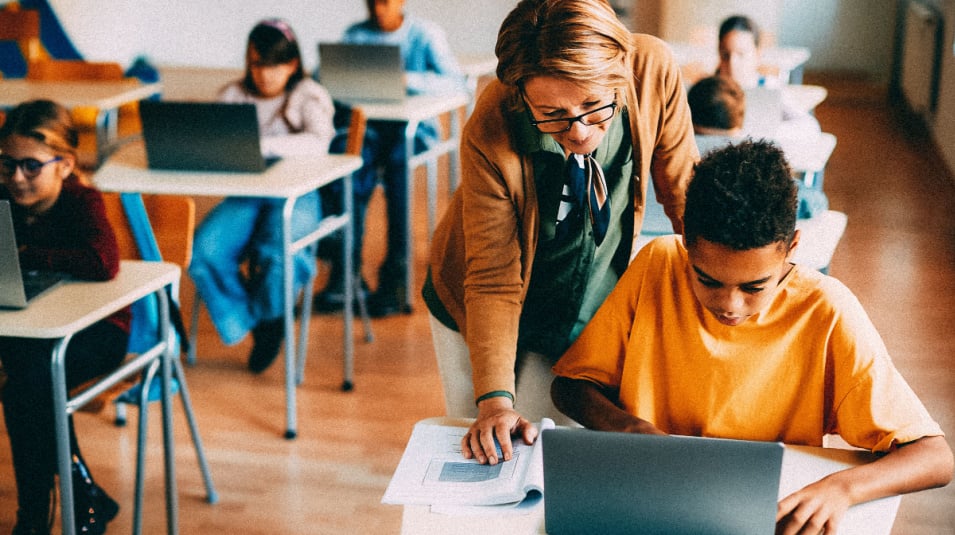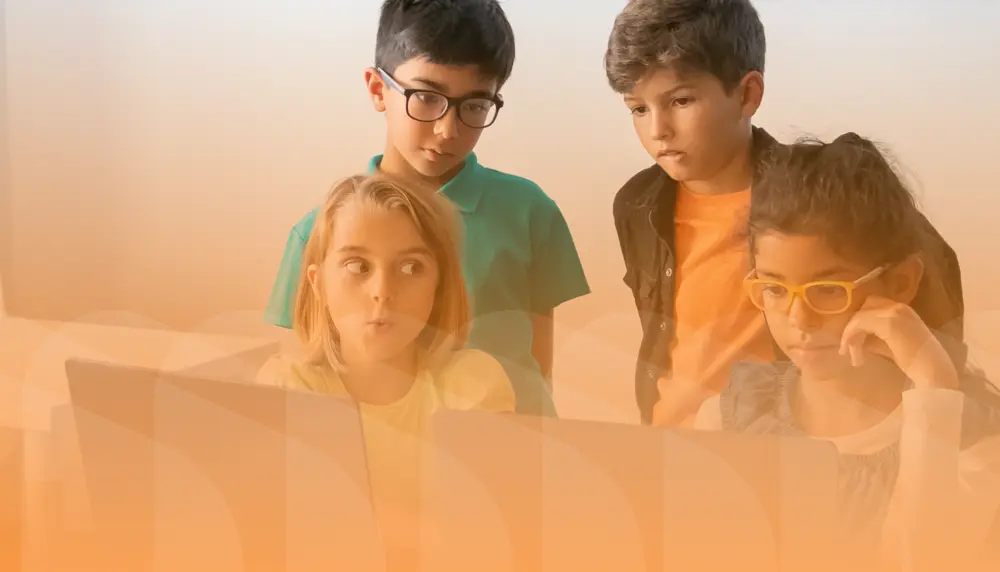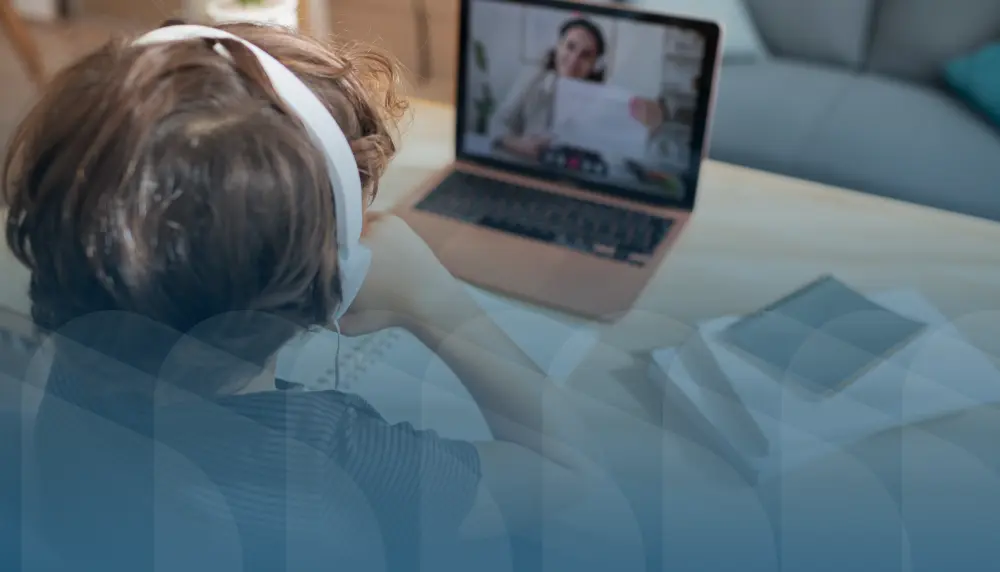
Distance learning has changed significantly over the years with the addition and integration of educational technology tools. Early on, distance learning took place through the mail and was at times called correspondence learning. This history is quite fascinating as schools were developed to reach different audiences using this method. The Society to Encourage Studies at Home catered to women over the age of 24 from 1873-1897 and the International Correspondence Schools began in an effort to help educate mine workers.
As time and technology progressed, distance learning migrated from correspondence through the mail, to online offerings. These online offerings are referred to with different names, but ultimately, they all fall under the umbrella of distance learning. In History of Distributed Learning by Art Graesser, Xiangen Hu, and Steve Ritter, synonyms for distributed learning include, “...distance learning, distributed or distance education, web-based and web-enabled instruction, online learning, and e-learning…More recently, “distributed learning” has come to reference an even-wider perspective, sometimes incorporating concepts such as distributed simulation, mobile learning, augmented and virtual reality, computer-assisted instruction, and web-based self-directed learning.”
Lots to unpack! So let’s get started.
The overnight evolution of distance learning
In recent history, schools around the world from K-12 to higher education, found that they needed to cease in-person learning due to the COVID-19 pandemic. Students, parents, and educators found themselves jumping into the world of distance learning practically overnight.
While distance learning was already increasing in usage prior to the pandemic, COVID definitely accelerated the adoption and use of distance learning. According to the National Center for Education Statistics, in the fall of 2021 61% of undergraduate students were enrolled in at least one distance education course. With this rising trend of distance learners it is important to be aware of the various types of distance learning. As distance learning progresses with the use of technology and remote learning models, it is expected that an upward trend will remain steady.
Types of distance learning
In today’s day and age, the local and global classroom look quite a bit different than that of the traditional classroom in a brick-and-mortar school. Read on to learn more about some of the more common forms of distance learning that may be found in a physical classroom or a virtual classroom.
1. Asynchronous vs. synchronous learning
Imagine, if you will, a swimming pool with synchronized swimmers. In the simplest terms, they are all doing the same thing at the same time in a synchronized manner. Synchronized learning is similar to students and teachers attending class in real-time. While this definitely doesn’t involve a swimming pool or water, synchronous learning means that all participants are in attendance in a virtual setting. Activities will vary and may include a short lecture, a video clip, a discussion, or a debate.
Asynchronous is the opposite of synchronous as students can participate in the course anyplace, anywhere and anytime. Content is readily accessible, generally on a week-to-week or module-by-module basis for students to consume and participate in through interactive activities, discussion forums, and providing feedback. At times, asynchronous content might include short videos with key concepts that students have the opportunity to watch over and over again if needed.
2. Fully online programs
The adoption and acceptance of fully online programs has increased over the years. With more accredited institutions offering online programs, distance learning has become accessible for non-traditional students. It’s no longer required for an individual to relocate to attend school and further their education. Online programs can be found at the K12 level, in higher education, and in corporate learning as well. A fully online program can be completely asynchronous or have synchronous elements involved with regularly scheduled sessions required for attendance.
3. Blended or hybrid learning
Blended or hybrid learning has elements of both in-person classwork and online work. This can sometimes be found in the form of a flipped classroom. Other times, it can be found with a virtual classroom enabled within a physical classroom. For example, a physical science teacher may be in a traditional brick-and-mortar school, but takes advantage of an LMS with supplemental material to enhance the course textbook.
In addition to video content, supplemental content comes in multiple formats including text (digital textbooks), audio, slide presentations, PDFs, links, and embeddable content. With tools like WeVideo’s interactive video design studio, PlayPosit, learners can watch a supplemental video with key concepts and complete a short assessment.
4. Massive open online courses (MOOCs)
Massive Open Online Courses or MOOCs came into the scene in the 21st century. One of the groundbreaking pioneers in the MOOC space, Peter Norvig, speaks to all elements involved in transitioning from a face-to-face class at Stanford University. He and his colleague, Sebastian Thrun, went from reaching hundreds of students a semester to reaching hundreds of thousands of students a semester. Interactivity in content delivery was an essential component of the MOOC format. Learn more about the early roll out of MOOCs in 2011 with the TED Talk below:
Who is distance learning made for?
Distance learning is made for everyone! With technology advancements, distance learning has allowed for a democratization of learning. Specifically, distance learning has leveled the playing field for learning with accessibility, flexibility, and a global population in mind.
In the years prior to the pandemic, school systems offered special services for homebound students. While these services are still offered, distance learning has allowed for a more robust content offering with school systems able to supplement homebound offerings from a larger library of offerings. This is just one example of how distance learning has made learning accessible to more learners.
Students come in a variety of life stages. In the K-12 space, there are situations that require a student to have more flexibility than a traditional in-person learning environment may offer. For example, a semi-pro athlete, or a child actor, may find that distance learning provides the flexibility needed to pursue their interests. As discussed earlier, “distance learning” doesn’t have to be full-time either. Plenty of educators incorporate elements of distance learning into their instruction (see: the flipped classroom), empowering extended learning, no matter where students are.
In higher education, distance learning means that adult learners can juggle work-life-school in a more balanced fashion, and in professional learning, employees have the opportunity to further their learning journey in a much more flexible manner.
Finally, distance learning has meant that there is a global audience for learning. No longer is learning contained within the four walls of a classroom, or within a state or country’s borders. Learning can take place on a global scale!
Advantages and disadvantages of distance learning
Advantages of distance learning include cost savings, global accessibility, adaptability, and rich self-paced learning opportunities. The flexibility and accessibility in distance learning provide opportunities for diverse audiences that range from working professionals seeking career advancement to students pursuing a variety of academic disciplines.
Disadvantages of distance learning often come in the form of the need for self-discipline, potential feelings of isolation, and the importance of reliable internet access.
Ultimately, despite these challenges, advancements in technology and the increasing demand for flexible education options continue to drive the growth of distance learning programs worldwide. Distance learning has emerged as a dynamic and transformative force in education. We’ve witnessed the powerful integration of technology, enabling learners around the world to access education in ways that were once unimaginable.
Distance learning is not merely a current trend but a springboard for a more inclusive, flexible, and interconnected educational landscape. The future promises even greater opportunities for learners to connect globally, collaborate seamlessly, and access a diverse array of educational resources. As we embrace these possibilities, the journey of distance learning becomes a testament to curiosity and the unyielding pursuit of knowledge in the digital age.
Explore the power of interactive video for distance learning

Bethany has spent nearly 20 years in learning and development and community management. She has experience in K12 education, higher education, and corporate learning. Her community management experience has focused on building learning networks and internal communities.
Currently, she is the Atlanta Ambassador for the Council of Supply Chain Management Professionals and involved in numerous XR at Work initiatives as she assists with rolling out VR Training within learning and development through her work with The Organic Learner.


